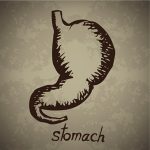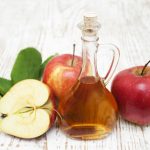 That burning sensation followed by a foul taste in your mouth happening far too often when you eat?
That burning sensation followed by a foul taste in your mouth happening far too often when you eat?
Forget blowing through those bottles of antacids and get to the bottom of your problem. It could be gastroesophageal reflux disease, commonly called GERD. It definitely makes the list of the top 10 digestive diseases in America. But why?
Advertisement
Gastroesophageal reflux disease symptoms are not only uncomfortable. They can be serious. Is it our diet of common heartburn triggers such as fatty or fried foods (be honest here!), tomato sauce, alcohol and caffeine that may make heartburn worse?
While you can avoid foods you know will trigger your heartburn, you need to take a closer look at what’s giving you so much trouble. Until you do, skip the burger and fries.
What is gastroesophageal reflux disease (GERD)?
 Gastroesophageal reflux disease occurs when acid and occasionally bile from your stomach refluxes or flows back into your esophagus and mouth.
Gastroesophageal reflux disease occurs when acid and occasionally bile from your stomach refluxes or flows back into your esophagus and mouth.
This shouldn’t happen because there is a one-way valve between your esophagus and stomach that allows food to enter your stomach but prevents it from flowing back in the esophagus. That valve is called the lower esophagus sphincter. It’s a band of muscles that contracts and relaxes, acting as a protective barrier.
GERD happens when that valve becomes weak, relaxes at the wrong time or doesn’t close properly, causing acid reflux. This kind of digestive industrial-strength acid is fine for your stomach to handle; it’s used for digesting food.The problem is, your esophagus is not designed to handle these strong gastric juices so it irritates the lining of your esophagus and can be quite serious. Over time, the inflammation can wear away the esophageal lining, causing complications such as bleeding, esophageal narrowing or Barrett’s esophagus, which is a precancerous condition.
Are you at risk for gastroesophageal reflux disease?
There are certain conditions to be aware of which can increase your risk. Eat a typical American diet and leading a more sedentary lifestyle are definitely high on the list. A study in the Journal of Neurogastroenterology and Motility in 2009 reported a 10 to 20 percent prevalence of GERD in the Western world, whereas only about 5 percent of the Asian population is affected.
In fact, estimates suggest that GERD occurs monthly in about half of American adults. People of all ages are susceptible, although seniors tend to have a more serious condition than younger people because of aging physiology.
Conditions that can increase your risk of GERD include:
- Obesity. Having a large amount of fat in the abdomen may be the most important risk factor for the development of acid reflux, studies suggest.
- Bulging of top of stomach up into the diaphragm (hiatal hernia)
- Pregnancy
- Smoking
- Alcohol use
- Dry mouth
- Asthma
- Diabetes
- Delayed stomach emptying
- Connective tissue disorders, such as scleroderma.
GERD: Signs and symptoms
 When it comes to gastroesophageal reflux disease symptoms, you may experience one or many of the following:
When it comes to gastroesophageal reflux disease symptoms, you may experience one or many of the following:
- A burning sensation in your chest (heartburn), sometimes spreading to your throat, along with a sour taste in your mouth
- Chest pain
- Difficulty swallowing (dysphagia)
- Dry cough
- Hoarseness or sore throat
- Regurgitation of food or sour liquid (acid reflux)
- Sensation of a lump in your throat
- Erosion of teeth and gums.
GERD: Treatment and prevention
 Treatment for gastroesophageal reflux disease usually starts with over-the-counter medications that control acid. If symptoms persist, your doctor may recommend prescription drugs. But we like to focus on natural ways to treat and prevent, starting with lifestyle factors which can have a major impact.
Treatment for gastroesophageal reflux disease usually starts with over-the-counter medications that control acid. If symptoms persist, your doctor may recommend prescription drugs. But we like to focus on natural ways to treat and prevent, starting with lifestyle factors which can have a major impact.
The following strategies are recommended by the Mayo Clinic:
Maintain a healthy weight. Obesity takes a toll on your health, especially when it comes to gastroesophageal reflux disease. Researchers have reported that increased BMI (body mass index) is associated with more severe GERD symptoms. Losing weight appears to help reduce GERD symptoms.
Part of the reasoning behind the connection is excess pounds put pressure on your abdomen, pushing up your stomach and causing acid to back up into your esophagus. So work to keep your weight healthy. If you are overweight or obese, start now to slowly lose weight.
Avoid tight-fitting clothing. Clothes that fit tightly around your waist put pressure on your abdomen and the lower esophageal sphincter.
Eat smaller meals. Avoid overeating by eating smaller meals.
Don’t lie down after a meal. Wait at least three hours after eating before lying down or going to bed.
Elevate the head of your bed. If you experience heartburn, put gravity to work for you and elevate your bed. Raising your head with additional pillows is not effective, so place wood or cement blocks under the feet of your bed so that the head end is raised by six to nine inches. If it’s not possible to elevate your bed, you can insert a wedge between your mattress and box spring to elevate your body from the waist up.
Advertisement
Don’t smoke. Smoking interferes with the lower esophageal sphincter’s ability to function properly.
Avoid foods and drinks that trigger heartburn. Everyone has specific triggers. Avoid foods you know will trigger your heartburn and develop your own gastroesophageal reflux disease diet. Use the following as a guide.
| List of GERD foods to eat and foods to avoid | |
|---|---|
Food to Eat
| Foods to Avoid
|
Getting to understand your food triggers and changing your daily habits can go a long way to helping you live without the uncomfortable symptoms of gastroesophageal reflux disease. Prevention, prevention, prevention!
